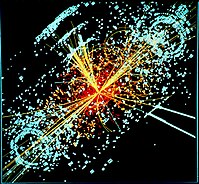
Photo from wikipedia
Abstract Drug isomer differentiation has become a relevant problem in forensic drug testing laboratories as new psychoactive substances include many closely related and isomeric forms. Both legislative and public safety… Click to show full abstract
Abstract Drug isomer differentiation has become a relevant problem in forensic drug testing laboratories as new psychoactive substances include many closely related and isomeric forms. Both legislative and public safety requirements demand unambiguous identification of the isomers. A novel approach for ring-isomeric differentiation using GC–MS by means of low energy Electron Ionization (EI) in combination with chemometric data analysis was developed. An ionization energy of 15 eV combined with a high efficiency EI source yields more information rich and thus discriminating mass spectra for ring-isomeric, cathinone-type drugs. Through multivariate statistics using Principal Component Analysis (PCA) followed by Linear Discriminant Analysis (LDA) mass spectral data can be exploited to confidently distinguish isomeric classes. Including feature selection of the mass spectra further enhanced the discriminative power of these models. In this way, all examined classes of cathinone and fluoroamphetamine isomers could be robustly identified, even through their conventional 70 eV mass spectrum from a quadrupole-MS instrument. A characteristic Likelihood Ratio (LR) based indicator was developed to quantify the selectivity of the models which proved to be useful for comparison, optimization and identification purposes. The potential of the method was demonstrated with six forensic case samples, providing 100% correct isomer identification. In general, this new approach enables robust classification of drug isomers that is currently not possible with conventional GC–MS methods without the use of additional spectroscopic analyses.
Journal Title: Forensic Chemistry
Year Published: 2020
Link to full text (if available)
Share on Social Media: Sign Up to like & get
recommendations!